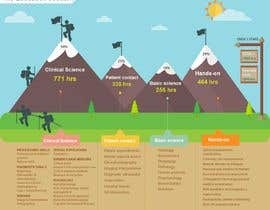Get Ready To Look Into The Interesting World Of Mobile Interactions In Cold Laser Treatment And Exactly How It Utilizes Light To Assist In Recovery. Take A Much Deeper Study The Clinical Elements!
Get Ready To Look Into The Interesting World Of Mobile Interactions In Cold Laser Treatment And Exactly How It Utilizes Light To Assist In Recovery. Take A Much Deeper Study The Clinical Elements!
Blog Article
Post Created By-Bendix Roberson
You may have heard of cold laser treatment as an appealing treatment option for various problems, however have you ever before questioned how it in fact works with a cellular degree? Recognizing the mechanisms behind this treatment can shed light on its effectiveness in advertising healing and lowering swelling. By exploring the science behind cold laser therapy, you'll acquire understandings right into the fascinating ways in which light can influence cellular processes and assist in cells repair work.
How Cold Laser Therapy Works
To comprehend exactly how cold laser therapy works, you need to comprehend the fundamental principles of how light power engages with organic tissues. Cold laser therapy, additionally known as low-level laser therapy (LLLT), uses specific wavelengths of light to pass through the skin and target underlying cells. Unlike the intense lasers made use of in surgeries, cold lasers release reduced levels of light that don't create warmth or trigger damage to the tissues.
When these mild light waves get to the cells, they're absorbed by parts called chromophores, such as cytochrome c oxidase in mitochondria. This absorption activates a collection of organic reactions, consisting of increased mobile energy manufacturing and the launch of nitric oxide, which boosts blood flow and reduces swelling.
Moreover, the light energy can additionally boost the production of adenosine triphosphate (ATP), the power currency of cells, aiding in cellular repair work and regrowth procedures.
Basically, cold laser therapy harnesses the power of light power to promote healing and minimize pain in a non-invasive and gentle fashion.
Systems of Action
How does cold laser therapy really work to produce its restorative results on organic tissues?
Cold laser therapy, also known as low-level laser therapy (LLLT), runs with a procedure called photobiomodulation. When the cold laser is related to the skin, the light energy passes through the tissues and is soaked up by chromophores within the cells.
neck and back pain treatment stamford ct , such as cytochrome c oxidase in the mitochondria, are after that boosted by the light energy, resulting in a cascade of biological responses. fractal laser of activity is the improvement of mobile metabolism.
The absorbed light power increases ATP manufacturing in the mitochondria, which is critical for cellular feature and repair service. In addition, cold laser treatment aids to minimize swelling by hindering inflammatory moderators and advertising the launch of anti-inflammatory cytokines.
This anti-inflammatory result contributes to pain alleviation and cells healing.
Restorative Effects
Comprehending the therapeutic effects of cold laser treatment includes acknowledging how the boosted mobile metabolism and anti-inflammatory buildings add to its positive end results on biological tissues.
When laser to quit smoking reviews is related to the afflicted area, it stimulates the mitochondria within the cells, bring about enhanced manufacturing of adenosine triphosphate (ATP), which is critical for mobile function and repair service. This increase in mobile power speeds up the recovery process by promoting cells regeneration and decreasing swelling.
Additionally, the anti-inflammatory residential properties of cold laser treatment assistance to reduce discomfort and swelling in the targeted area. By preventing inflammatory moderators and advertising the launch of anti-inflammatory cytokines, cold laser therapy help in easing discomfort and enhancing the overall recovery response.
This decrease in inflammation not only offers prompt alleviation however additionally sustains long-term cells fixing.
Final thought
To conclude, cold laser therapy functions by promoting cellular repair work and cells regrowth via photobiomodulation. Its anti-inflammatory properties provide pain relief and reduce swelling by inhibiting inflammatory moderators.
This treatment offers a detailed strategy to healing, delivering both immediate alleviation and lasting cells repair work benefits.
Via its systems of action, cold laser therapy shows to be an effective and encouraging treatment choice for a selection of conditions.
